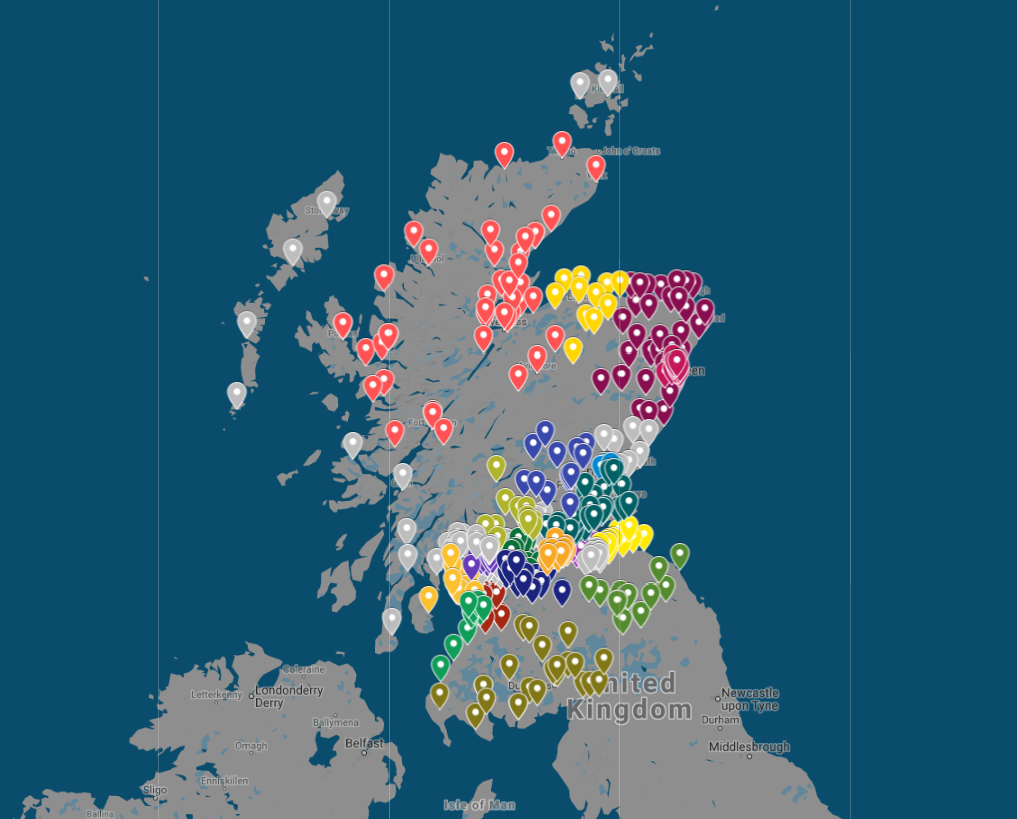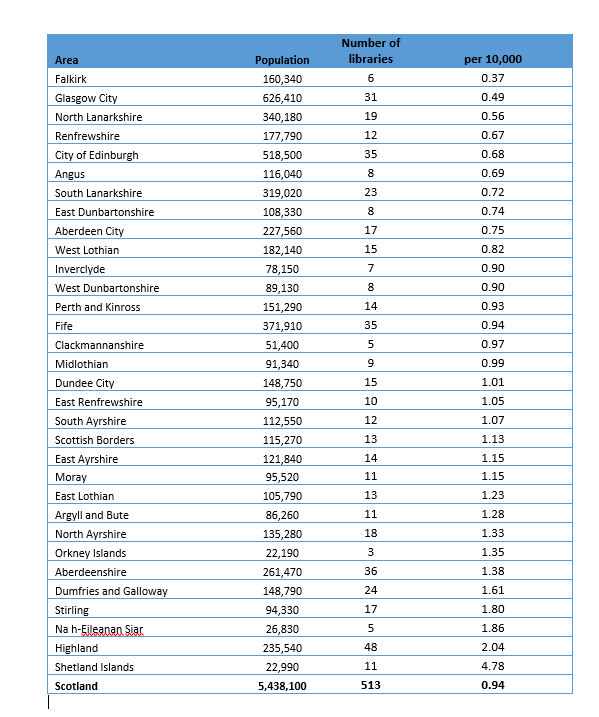Mapping the library sector

Following from my previous post on the number of public libraries, I am sharing a google map compiled used data on 513 public libraries in Scotland (note this list of libraries was compiled using data from public websites and informal conversations with staff in September 2018. These data do not include mobile library services.) Collected between September 2018 and April 2019 it suggests a further decline in public library numbers since the 527 reported in 2006/17.
The table below shows the distribution of public libraries (excluding mobile provision) across Scotland (these numbers were collated from local authority data during April 2019, accuracy cannot be guaranteed). The local authorities with the largest number of libraries include Highland, Aberdeenshire, Fife, City of Edinburgh and Glasgow City. This broadly follows area demographics, with these areas also having the largest populations. Rural areas, not surprisingly, are amongst those with the largest number of libraries per 10,000 of the population (based on 2018 mid year estimates). Shetland, for instance, has 11 public libraries – equivalent to just under 5 libraries per every 10,000 people. In Highland it is 2.04. The equivalent figure in our largest city, Glasgow is 0.37 in comparison, in Edinburgh 0.68. Of course, these figures don’t indicate that rural areas have a surplus of public libraries. Rather, what they an indicative of the local geography, and more boradly, the distribution of public service provision in this context (I’ll discuss mobile libraries in another post).
What is revealing in these simple figures is that at the local authority level there is huge variation. Angus, for instance, has far fewer libraries despite being is dispered and largely locale. Highland and Shetland have relatively largely proportion of libraries – however journey time and accessibility remains challening for many remote rural and island communities. Some urban localities – Glasgow is one such example – have a more concentrated library service arguably supported by a stronger infrastructure. However. how this is experienced by individuals and groups will be highly context specific.

These are anecdotal observations, yet they raise the importance of infrastructure. Infrastructure can relate to physical resources, such as an efficient, frequent and affordable transport route. Where this is in place, it becomes more feasible for people to travel to services. Howeveer, it also points to what Eric Klinenberg (2018) has discussed as social infrastructure. Such infrastructure can look different in different places – but what is clear is that they are really important since it is through these infrastructures that we build social ties, and consequently feelings of trust, co-operation and a sense of belonging.



